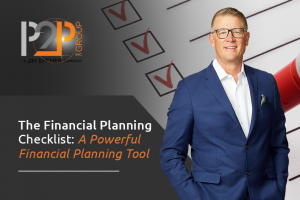How To Open Your Planning Meetings With Clients

You just had a successful fact-finder discussion and your clients are coming back for their first planning meeting. Right off the bat, it is important to put them at ease and show them the true financial professional you are. How should you open this critical meeting to continue the momentum you made during the fact finder?
I found the best way to open the planning meeting is through summarizing. I refer to this brief summary as the introduction to the plan. The first purpose of summarizing is to review and clarify everything discussed in the previous meeting. The second goal is to prove to the client that we listened effectively during the first meeting.
In other words, we should demonstrate that we have successfully captured all the factual and emotional information expressed to us in the fact finder discussion. Once we’ve provided the summary, the client should feel we have a better understanding of them and that we truly listened.
Introducing The Summary
Let’s begin with the way I prefer to deliver an introduction to my summary. I use the following analogy:
“Mr. Prospect, as we go into this plan, one of the things you are going to learn is what it will take for you to get an ‘A’ in each section of the plan.”
The reason I prefer this approach to begin the summary is that most clients can remember their school days and recall their desire to earn an “A” in every subject tested. Next, I explain that very few of my clients have an “A” in every aspect of their planning, but that I believe it’s my job to help them understand, at least initially, what it takes to achieve an “A” grade.
Once you have opened the meeting and tapped into your client’s desire to succeed, you need to provide a convincing summary, encompassing every topic discussed in the fact finder interview. But don’t make the mistake of believing that you should bury the client in “facts.”
Most reps fall into a trap at this point by taking an overly logical approach to a process that involves very little logic on the part of the client. Clients are not fact-seeking automatons, because most of their buying decisions are emotional.
Reps must connect with clients on an emotional level, and then utilize that connection to solve logical problems. Therefore, before going into the plan, I try to touch on some emotional elements we discussed during the fact finder interview. These could involve personal feelings related to childhood experiences or perhaps adult experiences involving parents or other relatives.
Consider a hypothetical case where the client informed us they wanted to retire at age 65, while having a steady income thereafter to maintain their standard of living. You could give an overview of their IRAs, 401(k), the current balances, and projected growth.
However, I would not stop there. I would also discuss their goals based on what the client shared with me. Suppose the client told me his in-laws lived a comfortable retirement while his own parents struggled and eventually needed financial support due to lack of planning. I would remind him of the critical importance he attached to living in retirement like his in-laws rather than his parents.
This approach is a vital part of the summary, since it effectively used the information I gathered from the fact finder to connect and strike a chord with the client about their parents’ past financial difficulties. By connecting at this level, the client realizes how critically important it is to not repeat those failures, with me leading the way as their financial guide.
The lesson I’d like to emphasize is the importance of connecting through personal stories and understanding emotional issues before presenting logical solutions to a client’s financial concerns. Therefore, those emotional touches are an absolute necessity in the summary.
Bringing It All Together
The next step in the summary is to help clients understand that your job is to ask all the necessary questions, listen to their responses, and gather precisely accurate information. The entire purpose of the plan you are about to present is to help them better understand the steps necessary to achieve their financial goals.
This is a crucial point because many clients assume that the financial advisor intends to use the plan to manipulate them into buying something they don’t need. Stated another way, my kind of plan is developed through strategies the advisor feels are important for the client, as opposed to the other way around. You need to communicate to the client that the plan is based on what they told you.
To wrap up your summary, briefly describe the overall areas you will cover, so your clients have an idea of where the discussion is going before you open the first page of the plan.
The Real Work Comes Before
While any rep can begin with a summary in their planning meeting, it takes time and practice to master delivering one. Remember, the real work of delivering an effective summary takes place beforehand, during your fact finder meeting.
You have to be an active listener, ask the right questions and follow up with additional questions. Go beyond the numbers. Once you really understand both your client’s financial picture and their personal story, the summary practically builds itself.
[wd_hustle id=my-newsletter! type=embedded]
Recent Posts
[Sassy_Social_Share type="standard" url="http://jimeffner.com/open-planning-meetings-clients"]






